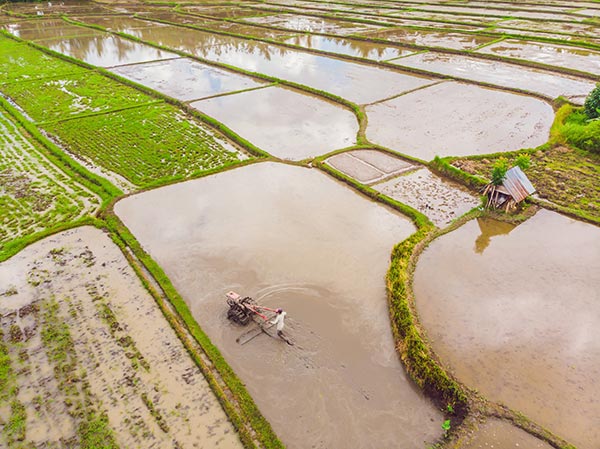
In some areas, nutrient costs have increased by 300 percent over the past year
Nguyen Binh Phong, the owner of a fertilizer shop in Vietnam's Kien Giang province, told the media that nutrient costs in that area have increased threefold over the past year. Consequently, many farmers have had to reduce fertilizer use by up to 20 percent, resulting in lower yields. "When the farmers cut fertilizer use, they accept that they will get lower profit," Phong said. Another major problem unique to rice is that the price of it has gone down, even as prices for most other things have gone up. This means that farmers are already struggling due to lower profits, which will only get even lower if they are unable to afford or access crop fertilizer. In order to maintain some semblance of social order, governments across Asia have kept rice prices low. Some of them are even offering generous fertilizer subsidies to keep farmers growing it with high yields. India will reportedly spend $20 billion this year to help shield its farmers from soaring nutrient costs, up from the $14 billion it was planning to spend before Russia invaded Ukraine. According to Bhandari, however, it is "inevitable" that rice prices will go higher in the future. "It has to be reflected somewhere," he said. Global food prices, meanwhile, remain at record highs, which will only get higher if the 2023 shortage predictions pan out as expected. This will almost certainly result in even more social unrest and chaos around the world as the dominoes of the global economy continue to tumble as part of the controlled demolition. "Rice, if properly stored, has no known shelf-life limit," noted one commenter at Zero Hedge. "You are not going to get any food which is as cheap as rice and lasts as long as rice." More news stories like this one can be found at Collapse.news. Sources include: ZeroHedge.com NaturalNews.comWorker productivity under Biden experienced a 7.5% drop, its biggest decline since 1947
By Arsenio Toledo // Share
We are at war already, by Scipio
By News Editors // Share
US intelligence brags about helping Ukraine kill Russian generals
By Ramon Tomey // Share
Meat prices will continue to rise for the next two quarters, warns US meatpacker
By Arsenio Toledo // Share
An invisible assault: How everyday heavy metals sabotage brain health
By willowt // Share
Pentagon warns of China's rapidly expanding nuclear arsenal
By kevinhughes // Share
FCC grounds new Chinese drones in sweeping security move
By avagrace // Share
The methylation switch: Scientists identify diet that can turn back the cellular clock
By jacobthomas // Share
Renaissance or Ruin: A wake-up call for cultural revival and self-sufficiency
By kevinhughes // Share
Weight loss in midlife may trigger brain inflammation, study finds
By avagrace // Share











